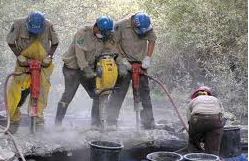What is Occupational Noise
According to the Environmental Burden of Disease Series, No. 9 Occupational noise, noise is commonly measured in decibels (written as dB). Sometimes noise meters measuring in dB may give numbers that do not relate well to the subjective impression of the noise heard. Physically, there is no difference between sound and noise. Sound is a sensory perception and noise corresponds to undesired sound. By extension, noise is any unwarranted disturbance within a useful frequency band (NIOSH, 1991). Noise is present in every human activity, and when assessing its impact on human well-being it is usually classified either as occupational noise (i.e. noise in the workplace), or as environmental noise, which includes noise in all other settings, whether at the community, residential, or domestic level (e.g. traffic, playgrounds, sports, music).
Definition of the Occupational Noise Exposure Indicator
“The most appropriate exposure measurement for occupational noise is the A-weighted decibel, dB(A), usually averaged over an 8-hour working day. There is a strong correlation between this parameter and the ability of the noise hazard to damage human hearing. It is frequently measured in the workplace, and is also the most commonly used epidemiological measurement of exposure. Exposure is initially measured as a continuous variable, and theoretically could be treated as such in assessing the burden of disease. This is impractical, however, as many surveys report exposure above and below cut-off values, rather than as a distribution”. Download the complete study here.
Hearing Protection in Noisy Environments
Custom Protect Ear are the manufacturers of the smartest hearing protection in the world ranging from protecting sounds from 85 decibels to over 120 decibels. Everyday occupational workers in the economic subsectors below are exposed to noise levels greater than 85 db.
- Agriculture, Mining, Oil & Gas, Aviation,
- Manufacturing, Electricity, Construction, Transportation and Security
We have categorized the type of hearing protection by decibels and the type of work environment noise exposure occurs.
-
Light Commercial/Industrial Noise Exposure <85 dB (A)
In a light Commercial/Industrial environment where there is moderately high noise exposure: 85 – 95 dB. Click here to see Hearing Protection.
-
Industrial/Heavy Commercial Noise Exposure 96 dB – 105dB (A)
Where there is moderately high noise in a heavy duty industrial environment with noise exposure 96 dB – 105 dB. Click here to see Hearing Protection.
-
High Noise Environment 106dB – 120dB (A)
The high noise environments sometime need double protection that still will allow two way communication. Click here to see Hearing Protection.
